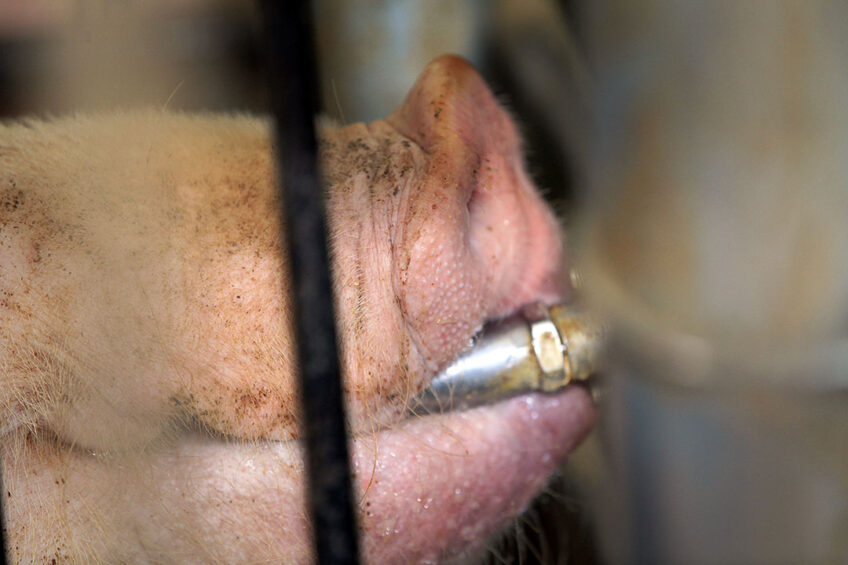Drinking behaviour and patterns: sign of compromised health in pigs

In commercial pigs, compromised health leads to significant antimicrobial consumption and concerns for both welfare and productivity. Early detection of health and welfare issues allows for timely intervention, reduces morbidity and mortality rates, and improves the overall well-being of pigs.
One of the key indicators of compromised health and welfare is an alteration in drinking behaviour and patterns. Farmers can use this as a potential tool for disease monitoring in pigs. Several factors impact this. Therefore, a detailed understanding of pigs’ normal drinking behaviour and diurnal variation will help to distinguish changes in the drinking behaviour and patterns caused by disease from those caused by other factors.
Factors affecting drinking behaviour and patterns
Water is an essential part of the nutritive and welfare requirements for pigs. The water intake follows a stable diurnal pattern. Different factors affect drinking patterns. These include drinker design, and the available flow of water in the drinking nipples. Other factors are diet, age, and temperature. Starting at 22°C water intake will increase. Weight, production status, level of social competition, and health also contribute. Studies showed that increased competition around the drinker reduces the number of visits and time spent drinking per pig per day. In neonatal piglets, water comprises nearly 82% of body weight and decreases slightly to 66% for a 28-day old nursery pig. Early weaning (at 7 days of age) causes a higher drinking rate in 6 weeks later compared to weaning at 14 and 28 days of age.
Normal drinking behaviour and patterns
Drinking is a voluntary liquid oral ingestion. Drinking behaviour is defined as when a pig has its head in the drinker for 5 seconds or longer and it develops over the first few days following weaning, with pigs engaging in 60 bouts that last less than 10 seconds.
Patterns are described as water disappearance, water consumption, and water wastage which are measured over a specific period of time and recorded to determine a usage pattern. A study by Brumm (2006) determined that in thermal-neutral conditions (< 26.7°C) pigs began drinking between 05:00 and 06:00 hours, with a peak in water disappearance early afternoon (14:00 hours) followed by a gradual decline from 16:00 to 22:00 hours.
When the temperature reaches 26.7°C or higher pigs alter their drinking patterns and drink earlier in the day with a morning peak from 08:00 to 09:00 hours followed by a gradual decline midday followed by a second peak between 17:00 to 20:00 hours.
Impact of compromised health on drinking behaviour and patterns
A pig’s diurnal drinking pattern remains stable in a healthy state yet can change when affected by disease. By monitoring water usage, farmers can detect a diarrhea outbreak in young pigs approximately 1 day before the physical signs show.
Drinking increases in some metabolic diseases and in response to dehydration resulting from diarrhea and stress. The frequency and duration of drinking behaviour is used to predict early stages of bacterial infections. For instance, a salmonella infection in pigs results in reduced drinking behaviour throughout the 4-week post-infection period. Clinical signs indicating that pigs are not receiving enough water or are choosing not to drink include dry feces, sunken eyes, and dehydrated skin.
Concluding remarks
Drinking behaviour and patterns are early indicators of compromised health and welfare. However, there are several factors that affect this. Thus, more knowledge about the normal drinking behaviour, detailed analysis, additional drinking variables, and their mutual interactions need to be quantified to identify changes in behaviour and patterns and their underlying causes.







